Lei making at ‘Ai Pono Hawaii
Art Therapy for Eating Disorders
Art therapy for eating disorders is a powerful complement to conventional talk therapy. Although different forms of art have been known for centuries to aid in people’s recovery from a wide variety of conditions, the use of art therapy in treating eating disorders is relatively new.
At its core, art therapy for anorexia and other eating disorders (or ED) encourages patients to create art and then reflect on the processes involved as well as the artwork that they created.
‘Ai Pono Hawaii provides effective and expert-guided art therapy for eating disorders. Through this form of therapy, our patients learn how to handle their stress, eating disorder symptoms, internal conflicts, and traumatic memories; enhance their awareness of themselves and others; and reap the pleasure and other benefits of creating art.
Our eating disorder recovery center in Maui, Hawaii has an experienced team of professional therapists who provide art therapy for anorexia and other eating disorders, along with associated and comorbid conditions. Our ED rehab center is open to all patients who wish to begin their life-changing recovery from one or several eating disorders.
Are you in need of treatment today? Talk with a professional today.
The Connection Between Art Therapy and Eating Disorders
According to The American Art Association, art therapy refers to “the therapeutic use of art making, within a professional relationship, by people who experience illness, trauma, or challenges in living, and by people who seek personal development.” Meanwhile, the Art Therapy Credentials Board (ATCB) defines art therapy as a form of therapy that harnesses “art media, the creative process, and the resulting artwork as a therapeutic and healing process.”
It’s important to keep in mind that receiving art therapy is not the same as simply attending an art class; art therapy is a form of psychotherapy that studies have shown as effective in treating various psychological and emotional issues, including eating disorders.
Eating disorders are complex because they involve physical, emotional, nutritional, and other aspects of a person. Disordered eating behaviors affect not just one’s physical health but one’s beliefs, relationships with others, and other parts of life.
Here at ‘Ai Pono Hawaii, we adopt a holistic approach in treating patients with eating disorders. We recognize that there is usually no single cause of an eating disorder; rather, there are several factors that contribute to each patient’s condition. For instance, one patient may have developed her eating disorder as a way of coping with anxiety in her studies, and this might have been exacerbated by a bullying incident in school; another patient might be struggling with an ED that was triggered by a traumatic experience related to sudden weight gain; and so on. At our center, we believe that art therapy for eating disorders should be customized for every patient, just like our other therapeutic programs and interventions.
In spite of this, however, we also recognize that there are certain issues that are common among ED patients. Examples of this are that they usually adopt rigid thinking patterns, are perfectionists, and find it hard to identify and/or express their emotions to other people.
Art therapy and eating disorders go well together because art therapy enables patients to get around their own language-based defenses and bring out the inner truths that are hidden or repressed deep in their subconscious. Patients who undergo art therapy learn to avoid censoring their words or arguing with their inner voice. They begin to welcome and embrace the wisdom of the answers to their questions and struggles that is revealed by their artwork from within their own psyche.
What Art Therapy for Eating Disorders Entails
Many patients wonder how art therapy can help in their recovery. Some doubt that it will be effective for them because they are “not an artist” or “not visually talented.” The fact and good news is that everyone who’s struggling from an eating disorder can benefit from art therapy, and it doesn’t require any artistic talent.
Art therapy for anorexia and other eating disorders is a spirited and hands-on experience. It provides a way of communication that relies on colors, symbols, textures, and other art form instead of words. It empowers ED patients to express their feelings and ideas clearly and freely without being constricted by the ambiguity and limitations of language.
Many patients who suffer from an eating disorder find it challenging to verbally express how they feel. On the other hand, most of them find it easier to share their feelings using the kinesthetic experience of creating art. Through the creative process, the actions involved in creating art itself, and the trusting relationship with a therapist, patients discover insights about their identity, allowing them to inch closer and closer to complete healing from their disorder.
The process of creating a piece of art fosters feelings of calmness, independence, and security. The product itself is of less importance than the process involved in creating it, which usually provides catharsis for patients. For therapists, the artwork may serve as material for uncovering patients’ inner beliefs or emotions without using multiple probing questions.
Using art therapy for eating disorders, patients can learn to recognize their own disordered beliefs around food, weight, and other parts of their identity. It provides a soothing avenue for communicating, acts as a safe process for self-understanding, and ultimately supports self- acceptance and personal development.
Benefits of Using Art Therapy for Eating Disorders
Whenever people hear the word ‘therapy,’ the first thing that usually comes to their mind is ‘talk therapy’, which describes traditional psychotherapy in which the client talks with a therapist while sitting on a chair or couch. The widely popular and effective cognitive behavioral therapy
(CBT) and dialectical behavior therapy (DBT) are two forms of therapy that involve talk therapy. Art therapy for eating disorders, on the other hand, is a form of experiential therapy in which art is used to achieve therapeutic goals. Despite the fact that artistic expression has long been known to enhance people’s well-being, this type of therapy is not yet as acknowledged nor as utilized compared to traditional therapies. Fortunately, there is growing interest in research as well as evidence-based practice for this treatment in recent decades.
There are various benefits to using or including art therapy for treating anorexia and other eating disorders:

1) Artistic skills are not required.
Our therapists are specially trained in the application of art to the practice of psychotherapy and but patients do not need to be skilled or experienced artists. Rather, all they need to have is the willingness to engage in creative activities while being guided by our therapists throughout the healing process. This makes art therapy beneficial for everyone, no matter what artistic skills they may (or may not) have. The process of creating art activates different parts of our brain compared to verbal processing. As a result, art therapy for anorexia and other eating disorders also enhances patients’ cognitive and sensorimotor functions.
2) It’s safe and naturally cathartic.
As stated earlier, another common characteristic of patients with eating disorders is their difficulty in expressing themselves through words. This may be due to shame, guilt, trauma, or other negative emotions or beliefs that they may not even be aware of.
Art therapy is particularly effective in helping these patients because it doesn’t rely on verbal communication, but uses art to effectively relay psychological and emotional responses.
For instance, some patients experience temporary catharsis in purging episodes when they associate purging to letting go of their shame, stress, sadness, boredom, or other unpleasant emotions. In such cases, art is a better alternative because it’s a form of expression that doesn’t endanger their body. Instead of purging, patients can paint abstract art and release their pent-up emotions on the blank canvas while symbolically purging their negative thoughts and feelings.
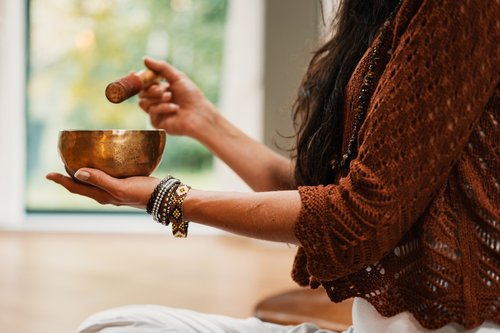
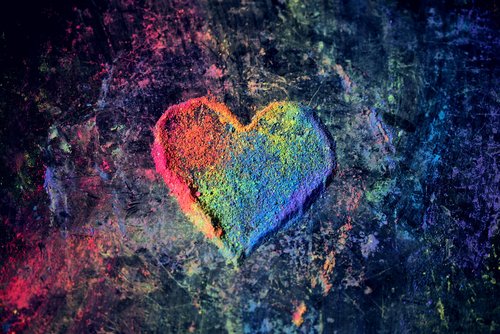
3) It reveals suppressed or unrecognized needs and emotions.
Advances in neuroscience have shown that people carry implicit memories—long-term memories that are automatic and unconsciously held. Our past experiences (from as early as infancy) can have long-lasting influence in our beliefs of our identity, other people, and the world. Unfortunately, many of us are not even aware of these implicit memories, yet they influence our everyday life.
Patients who suffer from eating disorders may have implicit memories that directly formed or contributed to their disordered relationship with their body, weight, or food. Art therapy for eating disorders acts as a special medium for accessing and eventually correcting those unconsciously held dysfunctional beliefs.
Moreover, unhealthy obsession with one’s body, weight, or food usually result from an attempt to deal with negative emotions like anger, depression, loss, and helplessness. When that attention is diverted from food to the creation of art, patients will be able to develop a new and more appropriate ‘language’ for expressing themselves.
ED patients also typically use verbal defense mechanisms like rationalization, persuasion, and intellectualism, among others. Through artistic expression, we discourage patients from automatically using those maladaptive coping mechanisms, while also promoting universal themes of healing.
In addition, art therapy for eating disorders empowers patients to explore their feelings and needs by allowing them to more easily access those inner and less conscious parts of themselves. For instance, the colors used in an artwork are associated with particular emotions. Here at ‘Ai Pono Hawaii, our art therapists are skilled in helping patients identify the meanings of colors in their creations and in using those insights for their recovery.
4) It addresses problems at the root.
Based on our center’s more than three decades of experience in treating a variety of eating disorders, effective and long-term recovery needs to address each patient’s underlying maladaptive beliefs, fears, and attitudes. Art therapy serves as a safe space for challenging those, including perfectionism and rigidity.
Many ED patients are perfectionists, and their unrealistic desire for perfection manifests in unhealthy weight or body image goals. Fortunately, this unhealthy need for perfection is eliminated in art therapy’s creative process. Because art by itself does not follow any set rules or structure, patients are empowered to simply be themselves and create what they want, the way they want. This also teaches them to free themselves from their harsh inner critic.

Here are just some of the benefits that patients gain from art therapy for anorexia and other eating disorders:
- Stress relief or management
- Greater knowledge surrounding their eating disorder
- Improved self-awareness
- Enhanced sense of pride
- Better sense of autonomy
- Improved mind-body connection
- Healthier ways of coping with difficult or overwhelming thoughts and emotions
- Better problem-solving skills
- More varied perspectives in viewing and dealing with problems
- Improved self-esteem and body image
- Less dependence on unhealthy defense mechanisms (such as intellectualization and rationalization)
- Enhanced regulation of emotions
- Better social skills
- Improved locus of control
- Greater therapeutic insight
What to Expect from Our Center’s Art Therapy for Eating Disorders
‘Ai Pono Hawaii rehab center offers comprehensive and holistic treatment programs for treating a variety of eating disorders. Our art therapy for eating disorders is integrated in our treatment plans, depending on each patient’s therapeutic objectives.
While conventional therapies like cognitive behavioral therapy and family-based treatment (or family therapy) are known for their long-term effectiveness, research studies have highlighted the role of emotion regulation problems in the development and maintenance of eating disorders.
Skilled therapists recognize the value of emotion-focused therapies—like art therapy—in improving treatment outcomes through the promotion of more adaptive emotional regulation. Our art therapy for eating disorders serves as both a concrete and metaphorical means for self-expression. Although creating art by oneself has therapeutic benefits, authentic art therapy includes a professional art therapist in the process.
Our experienced therapists are licensed and trained in both psychotherapy and arts. They combine their knowledge in psychology, counseling, and human development to provide a comprehensive and tailor-fitted treatment program for every patient. They have extensive experience in understanding how symbolisms, imagery, and metaphors in art provide useful insights into a patient’s inner state. They observe patients before, during, and after the process of creating artwork, and meticulously examine patients’ artworks to generate clinical interpretations that guide the therapeutic process forward.
‘Ai Pono Hawaii’s art therapy for eating disorders involve a wide range of sensory, kinesthetic, symbolic, and perceptual therapeutic activities that engage both our patients’ mind and body.
Our center’s art therapy sessions involve (but are not limited to) the following:
Drawing
Focused doodling
Painting (including rock painting)
Collage making
Sculpting
Lei making
Clay modeling
3D art creation
Mixed media creation
Collaborative art making
Journaling
Scrapbooking
We typically integrate experiential therapies, including art therapy, in our holistic programs for treating eating disorders. We use these to supplement conventional treatment modalities in providing comprehensive treatment that’s customized for every patient’s unique therapeutic needs.
Our experienced therapists use art therapy for anorexia and other eating disorders in challenging patients’ unhealthy desire for perfectionism while simultaneously promoting change and (re)birth in the process of creating art. We empower patients by allowing them to select which materials to use, and to uncover their unique creative abilities along the process.
Afterwards, our therapists guide patients in processing symbolic images in their artwork through self-reflection and discussion. Our therapists guide patients in discovering the meaning and insights behind their creations.
Our art therapy for eating disorders is usually delivered in one or several of these formats:
1) Individual sessions
Art therapy can be done one-on-one between the art therapist and the patient. There are times when a patient will meet with a therapist for traditional psychotherapy and have a separate art therapist. For some patients, a single therapist might integrate art therapy into the treatment plan to supplement other treatment modalities. In our individual art therapy sessions, patients can gain deep insights using visual timelines and examination of the challenges involved in their recovery journey.
2) Group therapy
Depending on a patient’s case, group art therapy might also be offered. In this format, patients can give and receive feedback and support from their peers who are in a similar journey. The advantage of being part of an art therapy group is the chance for deeper emotional processing as well as to form connections with other patients who can relate to their struggle.
In our center’s art therapy for eating disorders, patients may, for instance, create sculptures or other large pieces of art together. This gives them an opportunity to improve their interpersonal skills and collaborative problem-solving skills. They may also learn to work on the way they set and keep their boundaries, and how they handle disagreements or negative emotions like anger.
3) Family therapy
Family art therapy may also be conducted, in which family-rooted issues that are associated with the patient’s eating disorder are unearthed and tackled. These sessions help not only the patient but the entire family in healing as they create art together. This helps them renew and strengthen previously broken connections.
Here are more specific examples of art therapy exercises that we may use:
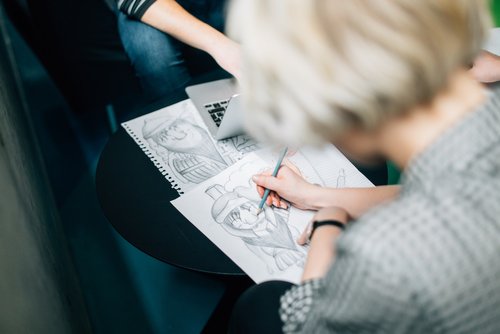
Drawing the Feelings
Since patients usually have a hard time figuring out what they’re feeling and/or expressing it, this technique allows them to express feelings through colors, lines, and shapes. Our therapist would later discuss the artwork to delve deeper into the patient’s underlying or repressed emotions.
Art Journaling
This is another common art therapy technique for expressing emotions. Using a journal, patients can express their “thought life” and challenge their self-critical thinking behaviors in a safe and private medium.
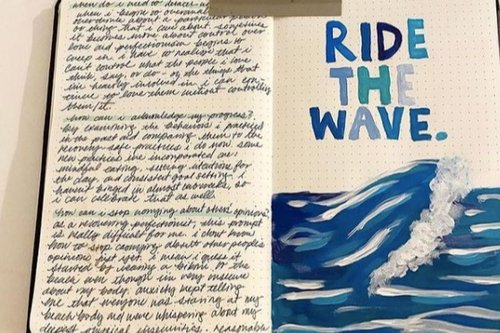
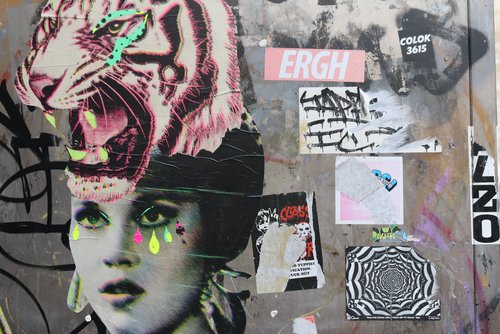
soul collage
In our Soul Collage group, patients are encouraged to use magazines and other collage materials to create collages based on recovery oriented themes that have been introduced by the group facilitator.
Through Soul Collage, patients can explore and repurpose different media formats in order to piece together their own unique visual stories.
Rock Painting
A unique tradition of our treatment program is our rock in/rock out ceremonies that each patient who comes to ‘Ai Pono participates in. This involves selecting a rock (one of many found on the nearby beach or surrounding gardens) and painting it to make it your own. This rock may mark a patient’s spot at the table during their stay, and then be placed back in the garden or on the property when they depart the treatment space.


Lei Making
Integrating Hawaiian culture, patients are introduced to the symbolism of the lei and guided through the process of making their own.
Open Studio
During Personal Growth time or in between group and individual sessions, patients are welcome to utilize our loft studio space to create art as another outlet for expression and processing of thoughts or emotions as they arise.
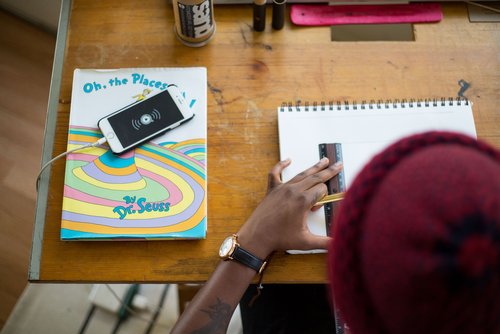
For patients who are struggling with an eating disorder, art therapy can serve as a channel for recovery, or—at the very least—an effective activity for soothing one’s anxieties or distracting one’s troubled mind. Over several sessions and using a variety of art therapy techniques, our therapists often witness positive changes in patients’ artworks: for instance, from previously depicting anger or depression, to symbolizing independence and healing. As they begin to trust their free and creative inner voice, the voice of their eating disorder slowly fades into the background. Patients also begin to reclaim their unique ideas and creative talents, and in the process, gradually reclaim their own and true identity.
Why Trust Our Eating Disorder Recovery Center
‘Ai Pono Hawaii take great pride in having more than 35 years of experience in offering effective, long-lasting treatment to patients with eating disorders such as Anorexia Nervosa, Bulimia Nervosa, Avoidant/Restrictive Food Intake Disorder (ARFID), Binge Eating Disorder, and more. We’ve also helped patients recover from conditions such as Night Eating Syndrome, Body Dysmorphia, Laxative Abuse, Body Image Distortion, and so on.
‘Ai Pono Hawaii’s treatment programs are truly holistic, consisting of conventional and well-established modalities such as CBT and DBT, as well as recent, evidence-based therapies like art therapy for eating disorders, narrative therapy, sound therapy, and many more.
We offer three levels of care: intensive outpatient, partial hospitalization, and residential treatment. We conduct individual or one-on-one, family, and group sessions, depending on each patient’s specialized treatment program.
All of our treatment plans are designed specifically for each patient and organized in consideration of each one’s unique emotional, physical, psychological, social, and spiritual needs. Our center’s non-judgmental professional therapists have not only the skills and knowledge but also the heart and compassion for helping patients throughout every stage of their recovery journey.
See a Brighter, More Colorful Future Through Art Therapy for Eating Disorders
Find out how ‘Ai Pono Hawaii’s effective art therapy for eating disorders can paint a better life for you (or your loved one)—a life that’s free from the darkness of disordered eating patterns. Contact us today to find out more about our holistic treatment for eating disorders.
